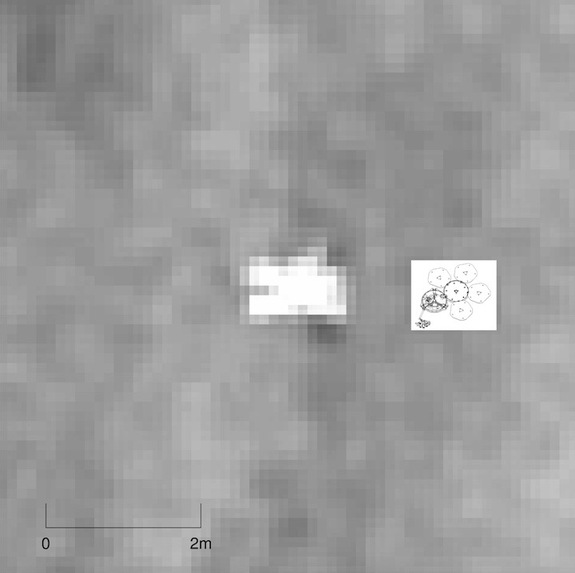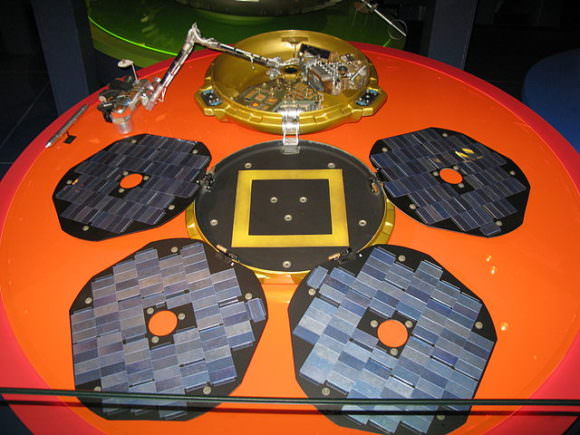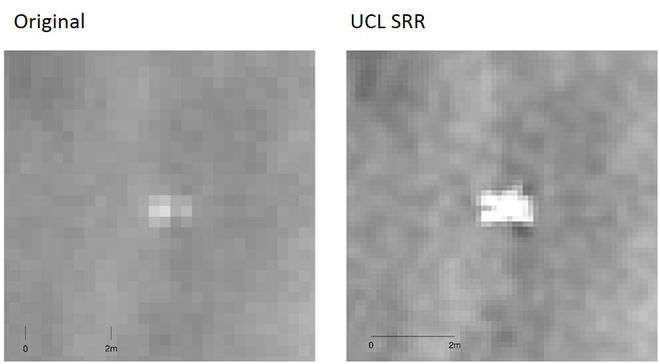We like to focus on successful space missions and celebrate what those successes add to our knowledge. But, obviously, not all missions are completely successful. And since some missions are at such huge distances from Earth, their fate can remain a mystery.
This was true of the Beagle 2 Lander, until recently.
The Beagle 2 was a UK contribution to the ESA’s Mars Express mission, launched in 2003. Mars Express consisted of two components; the Mars Express Orbiter and the Beagle 2 Lander. The mission arrived at Mars in December 2003, when the Beagle 2 separated from the orbiter and landed on the Martian surface.
Beagle 2’s destination was Isidis Planitia, a vast sedimentary basin. Beagle 2 was supposed to operate for 180 days, with a possible extension up to one Martian year. But the ESA was unable to contact the lander after several attempts, and in February 2004, the ESA declared the mission lost.
The Beagle 2, named after the ship that Darwin took on his famous voyage, had some solid science goals in mind. It was going to study the geology, mineralogy, and the geochemistry of the landing site, and also the physical properties of the atmosphere and Mars’ surface. It was also going to study the Martian meteorology and climate, and search for biosignatures. But all that was lost.
There was lots of conjecture, but the Beagle 2’s fate was a mystery.
Now, thanks to a new method of ‘stacking and matching’ photos of the Martian surface, which results in higher resolution images than previously possible, the likely fate of the Beagle 2 is known. It appears that the spacecraft landed softly as planned, but that solar panels failed to deploy properly. This not only starved the lander of electrical power, but blocked the craft’s antenna from functioning. This is why no signal was ever received from Beagle 2.

It took quite a bit of sleuthing to find the Beagle 2. The MRO has used its High Resolution Imaging Science Experiment (HiRise) camera to search for other craft on the surface of Mars, but the Beagle 2 was harder to find. It never sent even a brief signal after touchdown, which would have made it much easier to locate.
Adding to the difficulty is the huge landing area the Beagle 2 had. Beagle 2’s landing site at the time of its launch was an ellipse 170 km by 100 km in the Isidis Planitia. That’s an enormous area in which to locate a spacecraft that’s less than a few meters across once deployed, with a camera that has an image scale of about 0.2m, (10 inches).
The MRO has been using its HiRise to look for Beagle 2 since it was lost. As it went about the business of its science objectives, it captured occasional images of the Beagle 2’s landing site. Eventually, the lander was identified by Michael Croon, a former member of the ESA’s Mars Express Orbiter team. In HiRise images from February 2013 and June 2014, Croon found visual evidence of the lander and its entry and descent components.
The puzzling thing was that the image seemed to shift around in different photos. This could be because the lander deployed its solar panels like flower petals arranged around the center. The panels will reflect light differently in different lighting conditions, which could make the lander appear to change location in subsequent photos. If Beagle 2 is sitting on an uneven surface, that could add to the illusion.
The HiRise images are consistent with the idea that the panels failed to deploy, and that also makes sense if the panels blocked the antenna from operating. It’s also possible that the sun glinting off the panels only makes it appear that not all of them opened.

But what’s bad news for Beagle 2 is good news for the human endeavour to study Mars. The new technique of combining images of the surface of Mars yields photos with 5 times the resolution that MRO can provide. This will make selecting landing sites for future missions much easier, and will also contribute to the science objectives of the MRO itself.

The Mars Express Orbiter is still in operation above Mars, and has been for over 12 years. Among its achievements are the detection of water ice in Mars’ South Polar cap and the discovery of methane in the atmosphere of Mars. The orbiter also performed the closest-ever flyby of Mars’ moon Phobos.

